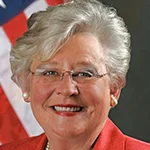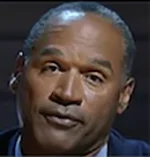 Ronn Torossian Ronn Torossian |
By the end of this year, charismatic billionaire Richard Branson will see his value grow out of this world. In the coming months, Virgin Galactic will become the first publicly listed company to send humans to space, beating Musk’s SpaceX and Bezos’s Blue Origin to the punch.
Things weren’t always this rosy. Just a few years ago, Virgin Galactic’s SpaceShipTwo crashed into the Mojave Desert, causing the death of a test pilot. Branson’s ambitious space tourism venture looked to be on the rocks. Ever the publicist, however, Branson was able to set the tone of the incident and steer his company onwards and upwards. Virgin’s crisis management is just that good.
In the wake of the tragic accident, Branson’s first comments were made on Twitter and, later, a blog post. “Thoughts with all @virgingalactic and & Scaled, thanks for your messages of support. I’m flying to Mojave immediately to be with the team,” he wrote. In a prompt online follow-up, Branson paid tribute to the “brave pilots and families of those affected,” and managed to make sympathy—rather than condemnation—the central part of the message.
By reacting quickly and positively, remaining empathetic and staying faultlessly visible, Branson turned a potentially reputation-destroying incident into a pitch perfect case of best practice crisis management. So, how did he do it?
First, the man knows what he’s doing. This wasn’t the first time Branson managed to handle a PR crisis with flying colors. In 2007, he handled the Virgin train crash tragedy in Cumbria, after which his handling of the crisis was described by the editor-in-chief of The Independent as “genius PR.” Secondly, the press likes him: when he appears to be grieving, they believe him. When he apologizes, they accept it. When he heralds the heroism of all those involved, the media do not suspect a hidden agenda. Branson has built a hard-won rapport with the public and is consistently given the benefit of the doubt in return.
Not convinced? Compare his handling of the Mojave Desert crisis with the way Malaysian Airlines dealt with the tragedy of flight MH370. After weeks of waiting with scant news, the relatives of the passengers were rewarded with a mere text message from the airline that the plane was assumed to be lost with zero survivors.
Or consider the handling of a 2009 incident on the Eurostar when some 2,000 passengers were trapped under the Channel Tunnel for close to 18 hours. While holidaymakers were reportedly advised “not to breathe so hard” amid dwindling air supply, pre-scheduled social media messages were posted at regular intervals throughout the ordeal. Talk about tone-deaf.
Few brands have been fortunate enough to land a CEO like Richard Branson, a leader with a natural flair for crisis communication. Still, even the highest hurdles can be overcome with the right groundwork; studying the master at work is a good starting point.
***
Ronn Torossian is CEO of 5WPR, a leading PR Agency.


 Southern governors claim they know what's best for their working class, and it's not pay raises... A Ukrainian human rights group played a key role in convincing House Speaker Mike Johnson to hold a vote to send arms to Ukraine, Israel and Taiwan... Trump Media & Technology Group blames short-selling and not lousy outlook for its stock slump.
Southern governors claim they know what's best for their working class, and it's not pay raises... A Ukrainian human rights group played a key role in convincing House Speaker Mike Johnson to hold a vote to send arms to Ukraine, Israel and Taiwan... Trump Media & Technology Group blames short-selling and not lousy outlook for its stock slump. The techniques deployed by OJ Simpson's defense team in the 'trial of the century' served as a harbinger for those used by Donald Trump... People worry about the politicization of medical science just as much as they fret about another pandemic, according to Edelman Trust Barometer... Book bans aren't restricted to red states as deep blue Illinois, Connecticut and Maryland challenged at least 100 titles in 2023.
The techniques deployed by OJ Simpson's defense team in the 'trial of the century' served as a harbinger for those used by Donald Trump... People worry about the politicization of medical science just as much as they fret about another pandemic, according to Edelman Trust Barometer... Book bans aren't restricted to red states as deep blue Illinois, Connecticut and Maryland challenged at least 100 titles in 2023. The NBA, which promotes legalized gambling 24/7, seems more than hypocritical for banning player for placing bets... Diocese of Brooklyn promises to issue press release the next time one of its priests is charged with sexual abuse... Truth Social aspires to be one of Donald Trump's iconic American brands, just like Trump University or Trump Steaks or Trump Ice Cubes.
The NBA, which promotes legalized gambling 24/7, seems more than hypocritical for banning player for placing bets... Diocese of Brooklyn promises to issue press release the next time one of its priests is charged with sexual abuse... Truth Social aspires to be one of Donald Trump's iconic American brands, just like Trump University or Trump Steaks or Trump Ice Cubes. Publicis Groupe CEO Arthur Sadoun puts competition on notice... Macy's throws in the towel as it appoints two directors nominated by its unwanted suitor... The Profile in Wimpery Award goes to the Ford Presidential Foundation for stiffing American hero and former Wyoming Congresswoman Liz Cheney.
Publicis Groupe CEO Arthur Sadoun puts competition on notice... Macy's throws in the towel as it appoints two directors nominated by its unwanted suitor... The Profile in Wimpery Award goes to the Ford Presidential Foundation for stiffing American hero and former Wyoming Congresswoman Liz Cheney. JPMorgan Chase chief Jamie Dimon's "letter to shareholders" is a must-read for PR people and others interested in fixing America and living up to its potential... Get ready for the PPE shortage when the next pandemic hits... Nixing Netanyahu. Gaza carnage turns US opinion against Israel's prime minister.
JPMorgan Chase chief Jamie Dimon's "letter to shareholders" is a must-read for PR people and others interested in fixing America and living up to its potential... Get ready for the PPE shortage when the next pandemic hits... Nixing Netanyahu. Gaza carnage turns US opinion against Israel's prime minister.


 Have a comment? Send it to
Have a comment? Send it to 
No comments have been submitted for this story yet.